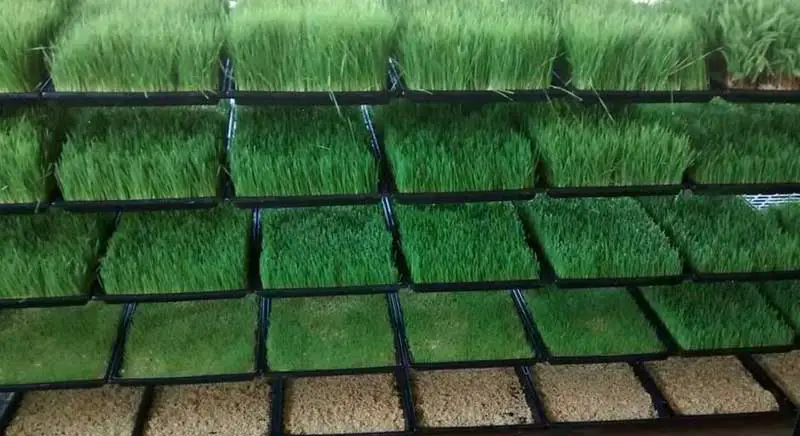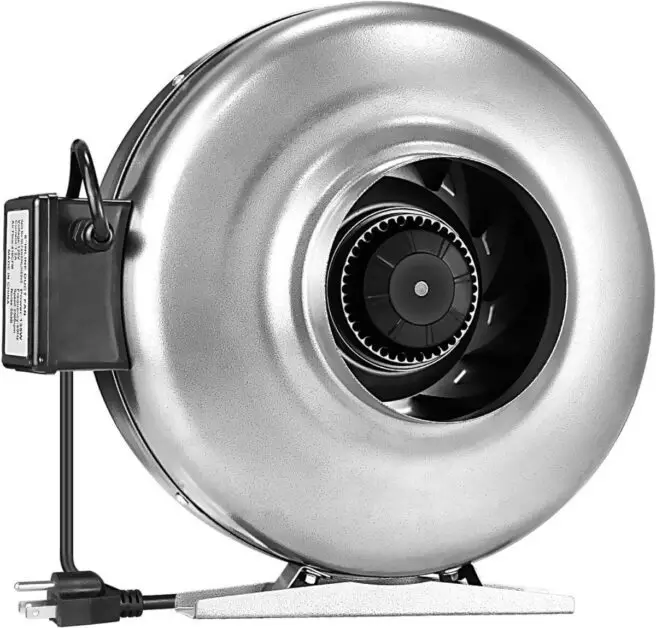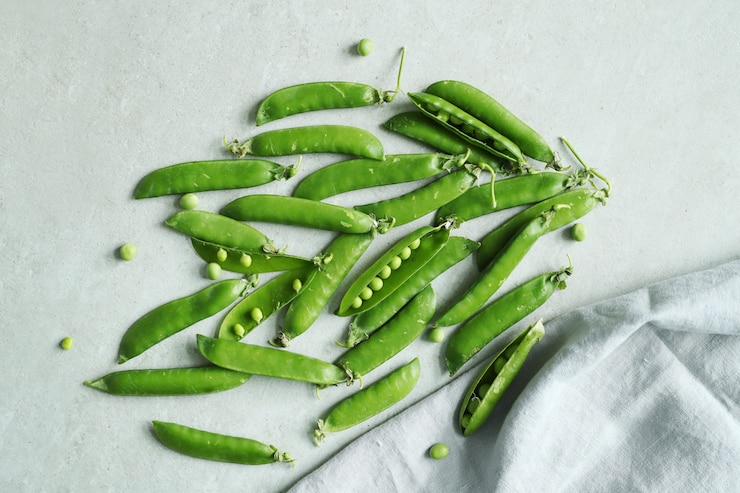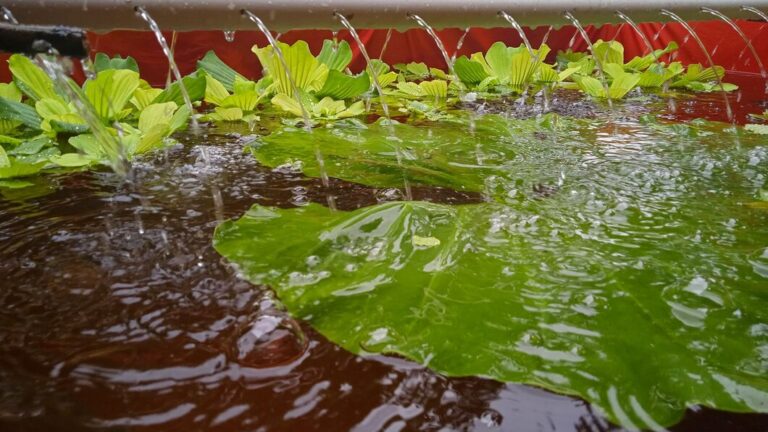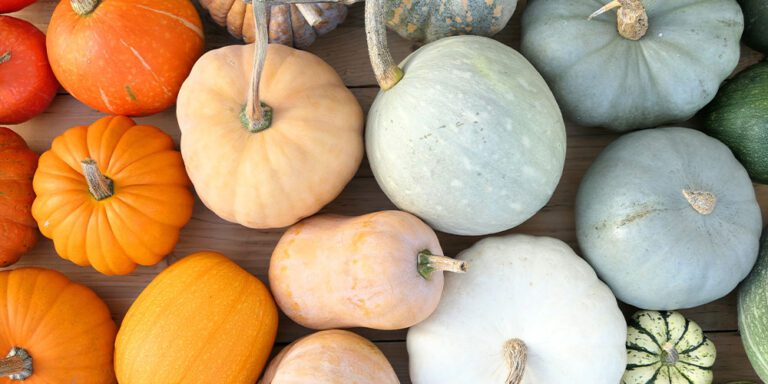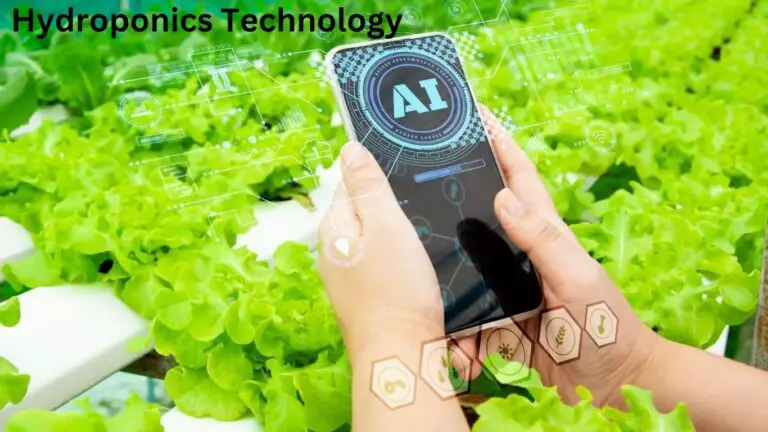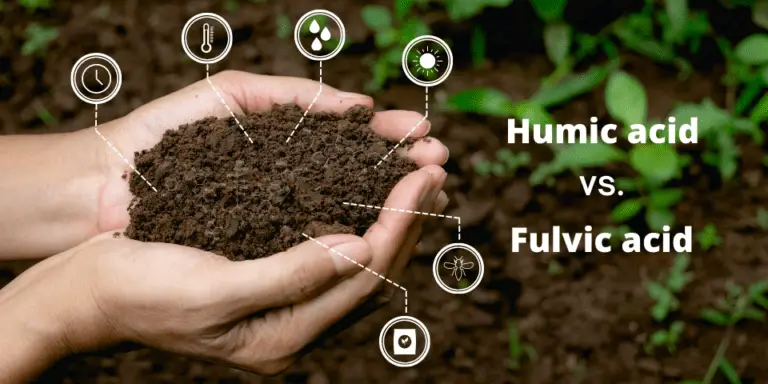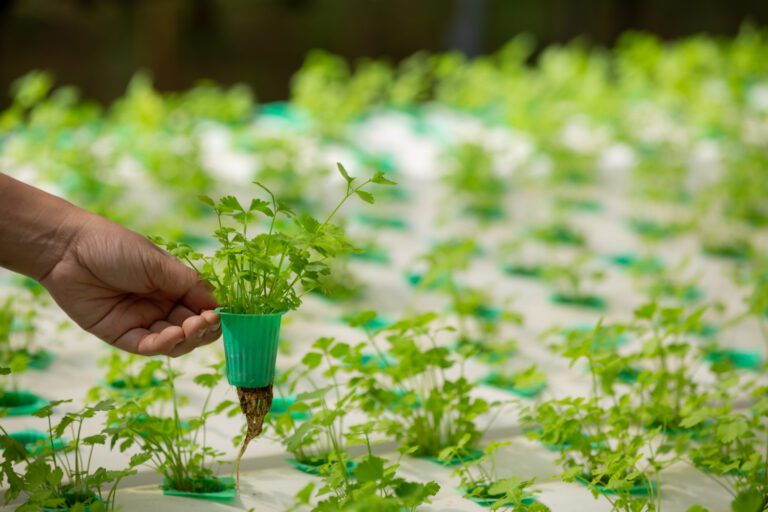Ultimate Guide to Hydroponic Fodder Growth
“Did you know that hydroponic fodder growth can revolutionize the way you feed your livestock? Imagine producing nutrient-rich, cost-effective feed right in your own backyard, without the need for acres of land or unpredictable weather conditions. In this comprehensive guide, we’ll delve into the world of hydroponic fodder, exploring its benefits, best practices, and step-by-step techniques to help you yield maximum results. Whether you’re a seasoned farmer or a curious beginner, this ultimate guide has everything you need to know to get started and thrive in hydroponic fodder production. Get ready to transform your livestock feeding routine and unlock a new level of efficiency and sustainability!”
Table of Contents
What is Hydroponic Fodder Growth?
Hydroponic fodder growth is a modern agricultural technique that involves cultivating nutrient-rich fodder crops without soil. Instead of traditional soil-based methods, hydroponic systems use water to deliver essential nutrients directly to the roots of the plants. This allows for efficient nutrient absorption and rapid growth of the crops.

• Hydroponic fodder growth involves cultivating nutrient-rich crops without soil.
• Nutrients are delivered directly to the roots of the plants through water.
• This method allows for efficient nutrient absorption and rapid crop growth.
• Hydroponic systems can produce high-quality fodder year-round, regardless of land availability or weather conditions.
• It requires less water compared to conventional farming practices, making it more sustainable and environmentally friendly.
• Faster growth and higher yields are promoted in hydroponic systems, leading to cost-effective production.
• Soil-borne diseases and pests commonly associated with traditional farming methods are reduced in hydroponic fodder growth.
Benefits of Hydroponic Fodder Growth
Hydroponic fodder growth offers numerous benefits for gardening enthusiasts and agricultural professionals alike.

Year-Round Cultivation
Hydroponic fodder growth breaks free from the shackles of seasonal limitations. Say goodbye to weather worries and geographical constraints as this innovative method allows for year-round cultivation of fresh, nutrient-rich fodder.
Controlled Environment
By ditching soil-based farming, hydroponic systems create a controlled environment where crops flourish without the threat of pests, diseases, or weeds. This controlled setting ensures optimal growing conditions, resulting in healthier and more abundant yields.
Enhanced Nutrition
Studies highlight the nutritional superiority of hydroponically grown fodder. Enhanced nutrient absorption and improved digestibility lead to healthier livestock with better weight gain, increased milk production, and overall improved animal health.
Sustainability
Hydroponic fodder growth isn’t just beneficial for livestock; it’s also a win for the environment. These systems use significantly less water compared to traditional farming methods, making them a sustainable choice, especially in water-scarce regions.
Cost-Effectiveness
In addition to being environmentally friendly, hydroponic systems are cost-effective. By reducing the need for expensive pesticides and fertilizers and optimizing water usage, farmers can enjoy long-term savings while still producing high-quality feed for their livestock.
Common Types of Hydroponic Fodder Systems
There are several types of hydroponic fodder systems that are commonly used in agriculture.

– Trays stacked vertically for efficient use of space
– Simple and affordable, suitable for small-scale operations or beginners
– Trays placed at an angle for easy water drainage and nutrient distribution
– Ideal for commercial fodder production, high yields, efficient space utilization
– Allows roots to absorb nutrients directly from the water
– Suitable for leafy greens and herbs, but may require additional equipment
suspended in channels or pipes
– Provides continuous supply of nutrients while maintaining oxygen levels
– Commonly used for lettuce and other shallow-rooted crops
using sprayers or foggers
– Maximizes oxygen exposure to roots, promoting rapid growth
– Requires precise control of temperature, humidity, and pH levels
These plant growing trays with drain holes have been an essential addition to my gardening setup. The trays are sturdy and durable, perfect for starting seeds or growing small plants. The presence of drain holes ensures proper water drainage, preventing waterlogging and root rot, which is crucial for the healthy growth of plants.
One of the notable advantages is their versatility. I’ve used these trays for various purposes, including seed starting, transplanting seedlings, and even as drip trays for potted plants. The compact size makes them ideal for use in limited space environments like my balcony garden. However, it’s worth noting that the trays may be a bit shallow for some plants with deep root systems, so I recommend using them mainly for shallow-rooted plants or as secondary trays within larger containers. Overall, these trays offer excellent value for money and have greatly contributed to the success of my gardening endeavors.
- These plant growing trays are equipped with drain holes, allowing for proper drainage and preventing waterlogging, which is essential for promoting healthy root development.
- The trays are made of durable materials, ensuring long-lasting use without easily breaking or deforming. This durability is particularly beneficial for repeated use in hydroponic or soil-based gardening setups.
- Some users have reported that the trays may be slightly flimsy, especially when filled with heavier growing medium or plants. This lack of sturdiness could potentially lead to bending or warping over time.
- While the drain holes are beneficial for preventing overwatering, they may also allow excess water to drain too quickly in certain environments, requiring more frequent watering to maintain optimal moisture levels for plant growth.
Choosing the Right Hydroponic Fodder System for Your Needs
Choosing the right hydroponic fodder system is crucial for maximizing the productivity and efficiency of your operation. With a variety of options available in the market, it is important to consider factors such as space, budget, and crop requirements before making a decision.

- Space Assessment:
- Evaluate the available space for your hydroponic system.
- Vertical systems are ideal for limited space, allowing you to stack trays.
- Larger-scale systems with multiple rows work well if you have ample space.
- Budget and Quality:
- Consider your budget and overall system cost.
- Prioritize quality and reliability over cheaper options.
- Investing in a reputable and durable system ensures long-term success.
- Operating Costs:
- Factor in operating costs such as water and electricity consumption.
- Choose a system that aligns with your sustainability goals.
- Crop Requirements:
- Research the specific needs of your crops.
- Different systems (e.g., NFT, deep water culture, aeroponics) offer varying growing techniques.
- Ensure proper light, temperature, and nutrient delivery for optimal growth.
By carefully considering the available space, budget, and crop requirements, you can make an informed decision when choosing the right hydroponic fodder system for your needs. Remember to consult with experts in the field, compare different options, and weigh the pros and cons before making a final choice. With the right system in place, you can enjoy increased productivity and success in your hydroponic fodder growth endeavors.
Selecting the Ideal Seeds for Hydroponic Fodder Growth
The selection of the ideal seeds for hydroponic fodder growth is crucial to ensure a successful and productive harvest. When choosing seeds for hydroponic fodder systems, there are several factors to consider.
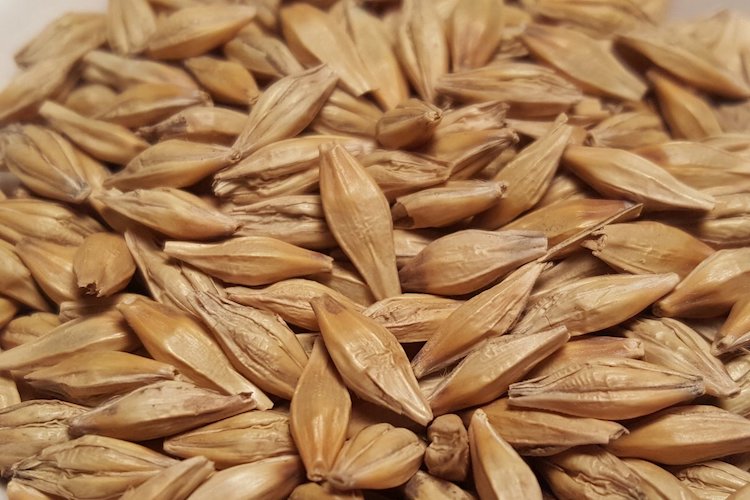
- Hydroponic-Specific Seeds:
- Choose seeds specifically bred for hydroponic cultivation.
- These seeds thrive in controlled environments with artificial lighting and nutrient-rich solutions.
- Opting for hydroponic-specific seeds increases yield and plant health.
- Animal-Specific Nutritional Requirements:
- Consider the dietary needs of the animals consuming the fodder.
- Different animals require varying vitamins, minerals, and macronutrients.
- Tailor seed selection to meet the nutritional balance needed for optimal health.
- Examples:
- Dairy Cows: Opt for seeds with high protein content.
- Poultry: Choose seeds rich in essential amino acids like methionine and lysine.
By taking into account both the specific requirements of hydroponic systems and the nutritional needs of the animals consuming the fodder, you can ensure a successful harvest. The right selection of seeds will result in optimal health and performance benefits for your livestock.
Understanding the Nutritional Requirements of Fodder Crops
Fodder crops play a crucial role in livestock feeding, providing essential nutrition for healthy growth and productivity. To ensure optimal yields and nutrient content, it is essential to understand the nutritional requirements of fodder crops. Each species of fodder crop has specific needs in terms of macronutrients, micronutrients, and overall nutrient balance.
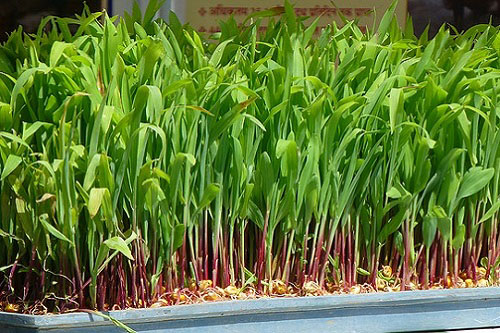
- Nutritional Requirements: Different fodder crops, such as barley, oats, alfalfa, and clover, have distinct nutritional needs. For instance, grasses like barley and oat thrive on higher nitrogen levels, while legumes such as alfalfa and clover require a balanced mix of nitrogen and phosphorus for optimal growth.
- Tailored Nutrient Solutions: Understanding these nutritional requirements is essential for successful hydroponic fodder growth. Growers can customize nutrient solutions to meet the specific needs of each crop, ensuring vigorous growth and high-quality yields.
- Importance of Vitamins and Minerals: In addition to macronutrients and micronutrients, fodder crops require adequate levels of vitamins and minerals to thrive. These nutrients play a crucial role in plant health and contribute to the nutritional value of the feed for livestock consumption.
- Optimizing Nutrient Supply: Providing the right combination and quantity of nutrients is paramount to ensure healthy growth and nutrient-rich fodder. Proper nutrients supply not only promotes robust plant growth but also enhances the nutritional content of the feed for animals.
- Consequences of Deficiency: A deficiency in essential nutrients can have detrimental effects on crop growth and nutritional quality. Stunted growth, reduced yield, and compromised nutritional value are common outcomes of nutrient deficiencies in hydroponic fodder production.
- Nutrient Formulation Consideration: Careful consideration of the nutritional requirements of different fodder crops is necessary when formulating nutrient solutions for hydroponic systems. By addressing these needs, growers can optimize growth conditions and maximize the nutritional value of their fodder crops for livestock consumption.
The table explain the amount of nutrient required for the Fodder Crops:
| Crop | Preferred Nitrogen (N) Levels | Preferred Phosphorus (P) Levels | Preferred Potassium (K) Levels |
|---|---|---|---|
| Barley | High (150-200 ppm) | Moderate (50-80 ppm) | Moderate (150-200 ppm) |
| Oat | High (150-200 ppm) | Moderate (50-80 ppm) | Moderate (150-200 ppm) |
| Alfalfa | Balanced (150-200 ppm) | Balanced (50-80 ppm) | Balanced (150-200 ppm) |
| Clover | Balanced (150-200 ppm) | Balanced (50-80 ppm) | Balanced (150-200 ppm) |
By meeting these requirements, hydroponic growers can cultivate healthy, nutrient-rich fodder crops that can significantly enhance the well-being and productivity of their livestock.
Preparing the Growing Environment for Hydroponic Fodder Growth
Preparing the growing environment is a crucial step in ensuring successful hydroponic fodder growth. Creating an optimal environment for your crops allows them to thrive and reach their full potential. There are several factors to consider when preparing the growing environment, including temperature, humidity, lighting, and ventilation.

- Temperature Control:
- Research the optimal temperature range for your chosen seeds.
- Install temperature control systems (fans, heaters) to maintain stability.
- Different crops may have specific temperature requirements.
- Humidity Management:
- High humidity can lead to mold and fungus growth.
- Low humidity can cause crops to dry out.
- Use a hygrometer to monitor humidity levels.
- Employ dehumidifiers or humidifiers as needed.
- Artificial Lighting:
- Most hydroponic systems require artificial light (LED, fluorescent).
- Ensure crops receive the right amount and quality of light for photosynthesis.
- Ventilation:
- Good air circulation prevents excess moisture buildup.
- Reduces the risk of pests and diseases.
- Promotes proper CO2 levels for photosynthesis.
- Installing fans or ventilation systems for optimal air movement.
By meticulously preparing the growing environment to meet the specific needs of your hydroponic fodder crops, you are setting the stage for successful growth and maximizing their potential. Taking the time to understand and address temperature, humidity, lighting, and ventilation requirements will contribute significantly to the overall health and productivity of your hydroponic system.
I recently integrated the iPower Inline Duct Ventilation Blower into my grow room setup, and I’m thoroughly impressed with its performance. The blower delivers powerful ventilation while maintaining a surprisingly quiet operation, which has created a conducive environment for my plants’ growth without disturbing the peace of my home. Its durable construction and easy installation process made it a seamless addition to my setup, and the adjustable fan speeds allow me to customize the airflow to suit the specific needs of my plants.
Moreover, I’ve noticed a significant improvement in the overall air quality and temperature regulation within my grow room since using this ventilation blower. It effectively circulates air, preventing stagnation and maintaining optimal conditions for healthy plant growth. While there are some minor considerations such as the need for regular maintenance and the initial investment cost, the iPower Inline Duct Ventilation Blower has undoubtedly proven to be a valuable addition to my hydroponic gardening setup, enhancing both efficiency and productivity.
✔ Quiet Operation: Operates with minimal noise, ensuring a peaceful growing environment.
✔ Durable Build: Constructed with high-quality materials for long-lasting durability.
✔ Easy Installation: Simple setup process allows for hassle-free installation.
✔ Versatile Use: Suitable for a variety of grow room setups and sizes.
✔ Energy-Efficient: Helps save on energy costs while maintaining effective ventilation.
✔ Adjustable Speed: Offers adjustable fan speeds for customizable airflow control.
❌ Additional Expenses: Some users may need to purchase additional ducting or accessories for installation.
❌ Limited Warranty: Warranty coverage may be limited compared to other ventilation systems on the market.
❌ Potential Compatibility Issues: Ensure compatibility with existing grow room equipment before purchase.
❌ Requires Maintenance: Regular cleaning and maintenance are necessary to ensure optimal performance.
❌ Initial Investment: The upfront cost may be higher compared to other ventilation options.
❌ Lack of Remote Control: Does not include a remote control feature for convenient operation from a distance.
Setting Up the Hydroponic Fodder System
To set up a hydroponic fodder system, there are several key steps to follow. First, you’ll need to select a suitable location for your setup. Ideally, this should be an area with sufficient space, good ventilation, and access to a reliable power source. Once you have chosen a location, you can begin assembling the necessary equipment.
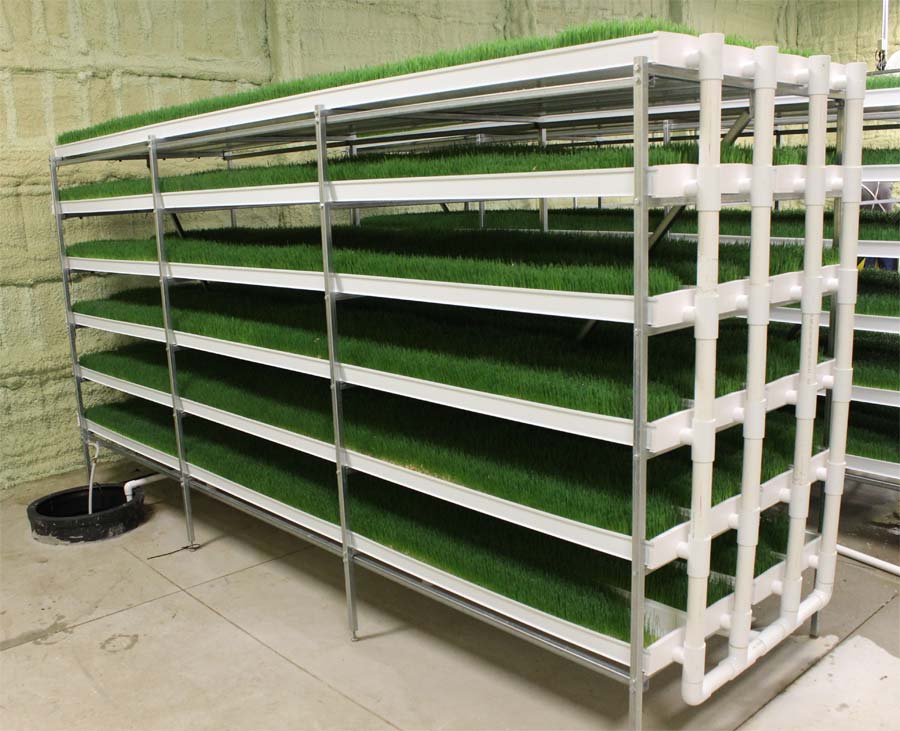
- Growing Trays: Utilize trays with a grid or mesh bottom for proper drainage and sufficient space for desired fodder crop quantity.
- Nutrient Solution Reservoir: Employ a reservoir to hold water and necessary nutrients, equipped with a pump and tubing for solution delivery to plants.
- Light Source: Install grow lights or utilize natural sunlight to provide adequate light for photosynthesis, depending on the setup.
- Temperature and Humidity Control: Implement a system to regulate temperature and humidity within the growing area, as these factors significantly affect plant growth and yield.
Managing Light and Temperature for Optimal Growth
Proper management of light and temperature is crucial for achieving optimal growth in hydroponic fodder systems. Light serves as the primary source of energy for plants, facilitating photosynthesis and driving their growth. It is important to ensure that the plants receive the right amount and quality of light to maximize their productivity.
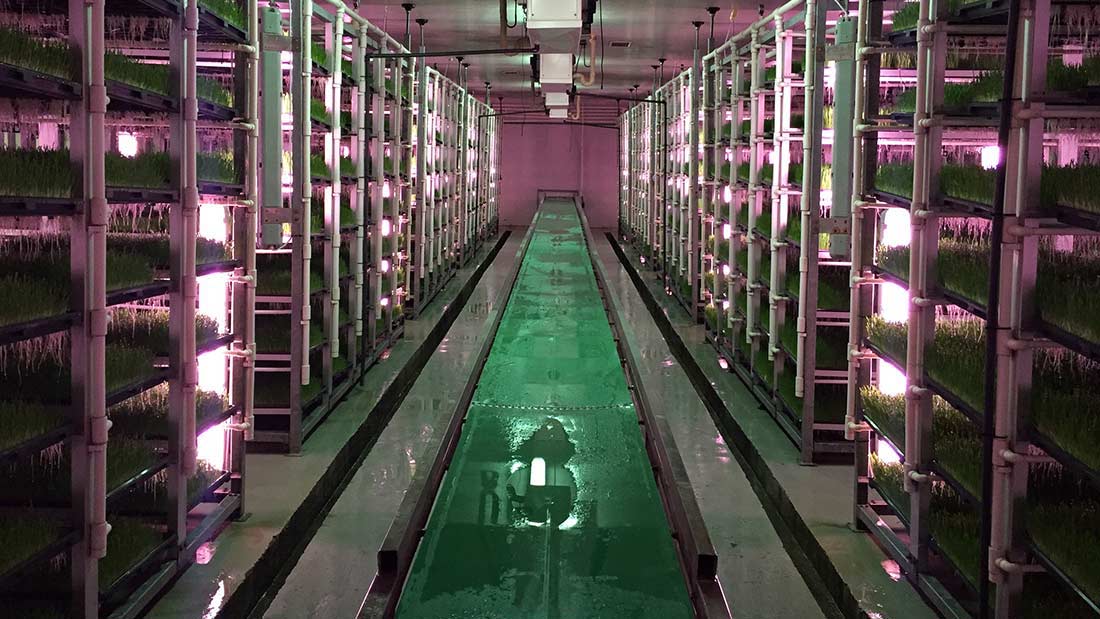
Balance light intensity to avoid extremes.
Too little light leads to weak, spindly plants.
Excessive light causes leaf burns and stunted growth.
Understand specific light requirements for your chosen fodder crop.
Adjust light distance or use shades/diffusers accordingly.
Most fodder crops thrive between 65°F and 75°F (18°C to 24°C).
Deviations impact growth and development.
High temperatures lead to wilting and increased water demand.
Low temperatures slow growth and increase susceptibility to pests.
Use ventilation, shading, and cooling systems to maintain ideal conditions.
Achieving the right balance of light and temperature is essential for ensuring the success of your hydroponic fodder growth. By carefully monitoring and adjusting these factors, you can create an environment that promotes healthy and vigorous plant growth.
Providing Adequate Air Circulation in the Fodder Growing Area
Air circulation is a vital aspect of hydroponic fodder growth that often goes overlooked. Adequate airflow not only helps to regulate temperature and humidity levels in the growing area but also plays a crucial role in preventing the development of certain plant diseases. Proper ventilation ensures that carbon dioxide and oxygen are distributed evenly, promoting healthy growth and photosynthesis.
- Choosing the Growing Space: Select a location that facilitates adequate airflow, such as a greenhouse, a grow tent, or a well-ventilated room. This ensures that there are no stagnant areas where moisture can accumulate, promoting healthy plant growth.
- Strategic Fan Placement: Install fans strategically at various points within the growing area to circulate air effectively. This prevents the formation of stagnant air pockets and helps maintain consistent environmental conditions throughout the space.
- Positioning of Vents: Carefully plan the placement of intake and exhaust vents to achieve balanced airflow. Intake vents should be situated near the bottom of the space to allow cooler air to enter, while exhaust vents should be positioned at the top to remove warm, humid air.
- Creating Upward Airflow: By establishing an upward flow of air, you can prevent the formation of microclimates that may negatively impact the health of your fodder crops. This ensures that air circulates efficiently, promoting optimal growth and minimizing the risk of mold or disease.
In conclusion, providing adequate air circulation is a critical aspect of hydroponic fodder growth. By ensuring proper ventilation and airflow within the growing area, you can create an optimal environment for your crops to thrive. In the next section, we will delve into the importance of proper watering and nutrient delivery in hydroponic fodder systems.
Watering and Nutrient Delivery in Hydroponic Fodder Systems
Watering and nutrient delivery are crucial aspects of hydroponic fodder systems, as they directly impact the growth and development of the crops. In a hydroponic setup, the traditional method of watering plants with soil is replaced with a more controlled and efficient approach. Instead of soil, the plants are grown in a nutrient-rich water solution, which is continuously circulated through the system.

- Watering Frequency and Duration:
- Adjust watering based on crop type, growth stage, and environmental conditions.
- Water multiple times a day to prevent waterlogging.
- Ensure roots have consistent access to water.
- Nutrient Solution Delivery:
- Hydroponic systems rely on nutrients solutions.
- These solutions contain balanced elements (nitrogen, phosphorus, potassium, micronutrients).
- Regularly monitor nutrient concentration.
- Adjust as needed to prevent deficiencies or toxicities.
Maintaining the correct nutrient concentration is important to avoid deficiencies or toxicities in the plants. Regular monitoring of the nutrient solution is essential, and adjustments may be required based on the crop’s requirements and any changes in the system. By providing adequate water and nutrient delivery in hydroponic fodder systems, growers can maximize the growth and yield of their crops, ultimately leading to healthier and more productive fodder for livestock.
Monitoring and Adjusting pH Levels in the Hydroponic System
Maintaining the proper pH levels in a hydroponic system is essential for the success of your crops. pH refers to the acidity or alkalinity of a solution, and it can greatly affect nutrient availability and plant growth. In hydroponics, the ideal pH range is typically between 5.5 and 6.5, although this can vary depending on the specific crop. Monitoring pH levels regularly is crucial to ensure optimal nutrient uptake and overall plant health.
- pH Monitoring Tools: Utilize a pH meter or test kit designed specifically for hydroponic systems to monitor pH levels accurately. These tools provide precise readings of the nutrient solution’s pH, essential for optimal plant growth.
- Regular Calibration: Ensure the accuracy of your pH meter or test kit by calibrating it regularly as per the manufacturer’s instructions. Calibration buffers are used for this purpose, ensuring consistent and reliable readings.
- Adjusting pH Levels: Based on your pH readings, make necessary adjustments to bring levels within the desired range. If pH is too high (alkaline), lower it by adding pH down solution or suitable acids like phosphoric or citric acid. Conversely, if pH is too low (acidic), raise it using pH up solution or bases like potassium hydroxide.
- Gradual Adjustments: Make adjustments gradually and retest pH after each addition to avoid overcorrection. This approach ensures precise control over pH levels, preventing drastic fluctuations that can harm plant health.
- Consider Nutrient Interactions: Be mindful that different nutrients can influence pH levels. It’s advisable to make pH adjustments after all nutrients have been added to the solution, allowing for a more accurate assessment of pH stability.
In the next section, we will discuss identifying and preventing common pests and diseases in fodder crops, which is crucial for maintaining healthy and productive hydroponic systems.
Identifying and Preventing Common Pests and Diseases in Fodder Crops
Identifying and preventing common pests and diseases in fodder crops is crucial for ensuring a healthy and thriving hydroponic system. These issues can significantly impact the quality and yield of your crops, making it essential to be proactive in their detection and management.
- Regular Inspection:
- Inspect plants regularly for signs of damage or irregularities.
- Look out for pests like aphids, mites, and caterpillars on foliage and stems.
- Observe symptoms such as leaf discoloration, wilting, or unusual growth patterns.
- Integrated Pest Management (IPM):
- Employ a combination of cultural, biological, and chemical control measures.
- Cultural Practices:
- Maintain proper hygiene.
- Provide adequate spacing between plants.
- Remove infected materials promptly.
- Biological Control:
- Introduce beneficial insects or microbial agents.
- Environmentally friendly approach.
- Chemical Treatments:
- Use targeted chemicals judiciously.
- Follow recommended guidelines.
- Consider environmental and human health impact.
By promptly addressing pests and diseases, you’ll ensure healthier and more productive hydroponic fodder crops. 🌱🌿🐛
Harvesting and Storing Hydroponic Fodder
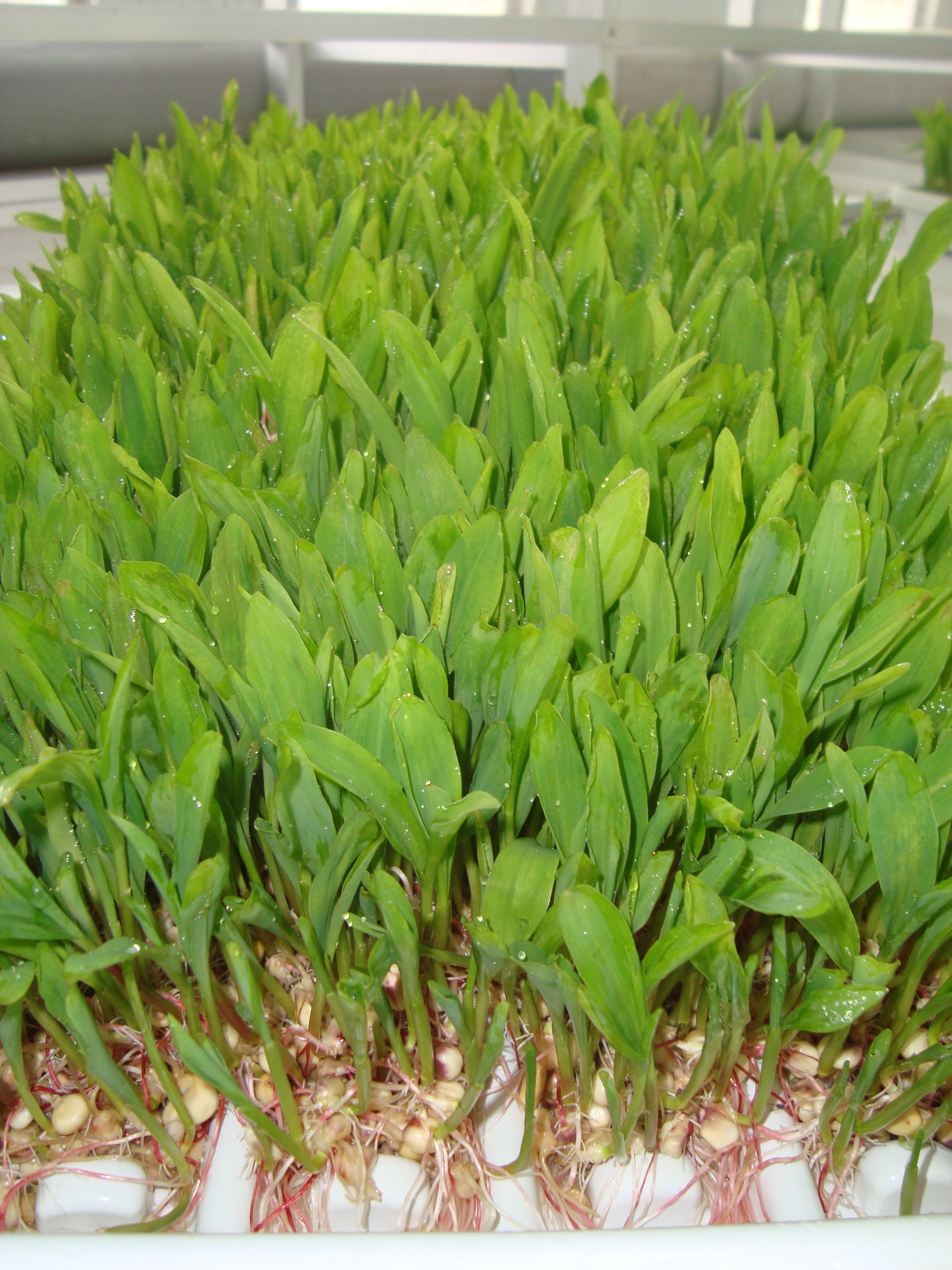
Harvesting and storing hydroponic fodder is a crucial step in the hydroponic farming process.
- Harvesting:
- Cut the sprouted fodder at the base of the growing medium.
- Ensure the entire plant is removed.
- Storage Methods:
- Refrigeration: Store harvested fodder in a refrigerated environment to slow down deterioration.
- Freezing: Freezing can retain nutritional value for a longer period.
- Packaging: Proper packaging prevents moisture loss and maintain quality.
By following proper harvesting and storage techniques, you can ensure that your hydroponic fodder remains fresh and nutritious, ready to be fed to your animals or used in other applications.
Maximizing Yield and Quality in Hydroponic Fodder Growth
To maximize the yield and quality of hydroponic fodder growth, there are several key factors to consider. Firstly, it is important to carefully select the seeds that will be used for the hydroponic system. Opting for high-quality, disease-resistant seeds that are suitable for hydroponic cultivation can significantly enhance the overall yield and quality of the fodder.

In addition to seed selection, providing the optimal conditions for growth is crucial. This includes managing light and temperature effectively.
By implementing these strategies and carefully attending to the needs of the hydroponic fodder system, it is possible to maximize both the yield and quality of the crop. However, it is important to remember that ongoing monitoring and adjustment are essential to address any issues that may arise and to continuously improve the productivity and nutrient content of hydroponic fodder growth.
Troubleshooting Common Issues in Hydroponic Fodder Systems
Troubleshooting common issues in hydroponic fodder systems is crucial for maintaining the health and optimal growth of your crops. As with any growing method, challenges may arise, but with proper knowledge and proactive management, these issues can be effectively addressed.
- Nutrient Management:
- Monitor nutrient levels in the solution regularly.
- Adjust nutrient concentrations to meet specific crop needs.
- Signs of nutrient issues include yellowing leaves and stunted growth.
- Pest and Disease Control:
- While hydroponics reduces risks, pests and diseases can still occur.
- Common pests: aphids, thrips, mites.
- Diseases: fungal infections, root rot.
- Implement preventive measures:
- Proper sanitation practices.
- Regular inspections.
- Use biological controls or organic pesticides.
- Promptly address signs of infestation or infection.
Addressing and resolving common issues in hydroponic fodder systems is imperative to ensure the longevity and productivity of your crops. By closely monitoring nutrient levels and implementing preventive measures against pests and diseases, you can tackle the challenges that may arise and maintain thriving hydroponic fodder growth.
Scaling Up Hydroponic Fodder Production for Commercial Purposes
Scaling up hydroponic fodder production for commercial purposes requires careful planning and implementation. To meet the high demand and ensure consistent supply, it is crucial to consider several key factors.
- Location Selection: Choose a site with ample space, access to electricity, and water sources. Proximity to customers or distribution channels can minimize transportation costs and ensure the freshness of the fodder.
- Equipment and Infrastructure Investment: Invest in high-quality hydroponic systems, irrigation systems, and lighting fixtures tailored to anticipated production volume and crop requirements. Have a contingency plan in place for equipment failures or unforeseen events.
- Management Practices: Implement proper management practices, including optimizing nutrient delivery, monitoring pH levels, and ensuring adequate air circulation. Regular monitoring and adjustment can prevent common issues such as nutrient deficiencies and pest infestations.
- Hygiene and Pest Control: Maintain strict hygiene protocols and implement effective pest control measures to safeguard the quality and yield of the fodder crops. This includes regular cleaning and disinfection of equipment and facilities to prevent contamination and disease spread.
By following these steps and adopting efficient production practices, scaling up hydroponic fodder production for commercial purposes can be a rewarding venture. However, it is important to continuously evaluate and adapt the production methods to meet the changing market demands and ensure sustainable growth.
In the following sections, we will delve deeper into the various stages of hydroponic fodder production to gain a comprehensive understanding of each aspect’s significance in achieving success on a larger scale.
Watch video for more information:
FAQ
What is hydroponic fodder growth?
Hydroponic fodder growth is a method of growing nutritious fodder for livestock without using soil. It involves providing a controlled environment where seeds are sprouted and grown using water, nutrients, and artificial lighting.
What are the benefits of hydroponic fodder growth?
Hydroponic fodder growth offers several benefits, such as faster growth rates, higher yields, reduced water usage, year-round availability of fresh fodder, and improved nutritional quality for livestock.
What are the common types of hydroponic fodder systems?
Some common types of hydroponic fodder systems include tray systems, stacked systems, and vertical systems. Each system has its own advantages and suitability for different scale of operations.
How do I choose the right hydroponic fodder system for my needs?
The choice of hydroponic fodder system depends on factors like available space, budget, desired production capacity, and specific requirements of your livestock. It’s important to evaluate each system’s pros and cons to find the best fit.
What factors should I consider when selecting seeds for hydroponic fodder growth?
When selecting seeds for hydroponic fodder growth, consider factors such as the nutritional requirements of your livestock, seed viability, germination rate, disease resistance, and availability of the desired crop variety.
How do I prepare the growing environment for hydroponic fodder growth?
To prepare the growing environment for hydroponic fodder growth, ensure proper sanitation of the growing area, install suitable grow lights, set up a temperature and humidity control system, and choose an appropriate substrate or medium.
How do I set up a hydroponic fodder system?
Setting up a hydroponic fodder system involves assembling the necessary equipment, installing irrigation systems, configuring lighting and ventilation, and ensuring proper nutrient delivery. It’s important to follow manufacturer guidelines and best practices.
How do I manage light and temperature for optimal growth in hydroponic fodder systems?
Managing light and temperature in hydroponic fodder systems involves providing the right intensity and duration of light, maintaining appropriate temperature ranges, and monitoring and adjusting these factors as needed to promote optimal growth.
How do I provide adequate air circulation in the fodder growing area?
Adequate air circulation in the fodder growing area can be achieved through the use of fans, vents, and air circulation systems. This helps prevent excessive humidity, reduce the risk of mold or fungal growth, and provide fresh air for the plants.
How do I monitor and adjust pH levels in the hydroponic system?
Monitoring and adjusting pH levels in the hydroponic system can be done using pH testing kits or meters. The desired pH range may vary depending on the crop, but generally, it should be maintained between 5.5 and 6.5 for optimal nutrient uptake.
How can I identify and prevent common pests and diseases in hydroponic fodder crops?
Identifying and preventing common pests and diseases in hydroponic fodder crops involves regular inspection, implementing integrated pest management strategies, maintaining proper sanitation, and using organic or approved pesticides if necessary.
How do I harvest and store hydroponic fodder?
Harvesting hydroponic fodder involves cutting the mature crop close to the roots. The harvested fodder can be fed immediately to livestock or stored in a cool, dry place to maintain its freshness and nutritional value for an extended period.
How can I maximize yield and quality in hydroponic fodder growth?
To maximize yield and quality in hydroponic fodder growth, ensure proper nutrient balance, provide optimal lighting and temperature conditions, follow recommended planting densities, and closely monitor growth parameters to make necessary adjustments.
What are some common issues that can occur in hydroponic fodder systems?
Common issues in hydroponic fodder systems include nutrient deficiencies or imbalances, pH fluctuations, mold or fungal growth, pest infestations, and equipment malfunctions. Regular monitoring and troubleshooting can help address these issues effectively.
How can I scale up hydroponic fodder production for commercial purposes?
Scaling up hydroponic fodder production for commercial purposes involves planning for increased production capacity, acquiring additional equipment, optimizing workflow, ensuring a reliable supply of seeds and nutrients, and implementing efficient management practices.

Studied Agricultural Engineering-Plant Protection at University of California, Davis.
Head of Content writing team at Southelmontehydroponics.com

